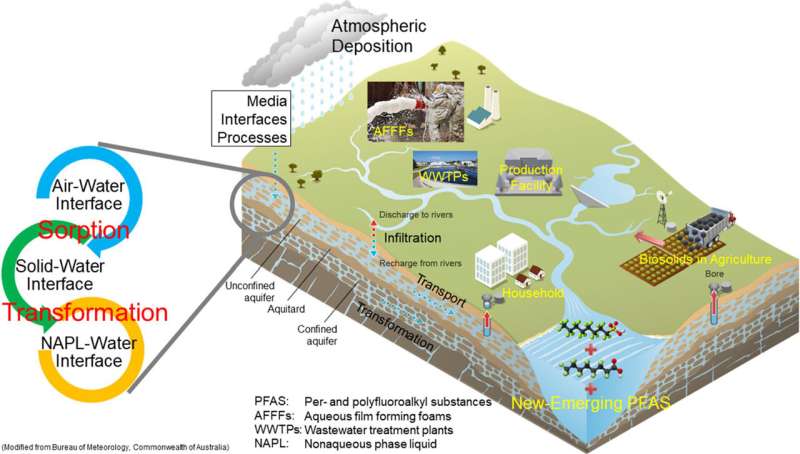Toxic 'forever chemicals' accumulate above the water table

PFAS (per- and polyfluoroalkyl substances) are water-, stain-, and heat-resistant chemicals added to products like nonstick pans, nail polish, food wrappers, and firefighting foam. They have been linked to health problems, including thyroid disease, liver damage, and kidney cancer. Increasingly, PFAS have become a public health concern because they don't break down, instead accumulating in the environment. These so-called "forever chemicals" are now found virtually everywhere, from human blood to the top of Mount Everest. Researchers are urgently trying to understand how PFAS move through the environment to get a better grasp of the extent of the problem and how to control it.
In a new article published in Reviews of Geophysics, Xueyan Lyu and colleagues summarize research published between 2010 and 2022 regarding the fate and transport of PFAS in the soil, ground, and groundwater. The article reviews the physical and chemical properties of PFAS that affect how they move through the subsurface environment and what causes them to stick around. The authors pay particularly close attention to transitional spaces, like soil to groundwater and air to groundwater.
Strikingly, the authors found that just a handful of PFAS have been studied in any detail, even though more than 3,000 have been manufactured and the list continues to grow rapidly. They identified the portion of soil above the water table as a hot spot of PFAS accumulation. Of the PFAS studied, the ones with short carbon chains and negative charges were most likely to move through soil and contaminate the groundwater.
The authors emphasize, however, that most observational and modeling studies on the fate and transport of PFAS have been conducted at a fairly small scale in a laboratory setting. The authors call for large-scale studies in natural settings that will provide critical information necessary to assess the environmental and health impacts associated with the exposure to PFAS, along with future remediation endeavors.
More information: Xueyan Lyu et al, Per‐ and Polyfluoroalkyl Substances (PFAS) in Subsurface Environments: Occurrence, Fate, Transport, and Research Prospect, Reviews of Geophysics (2022).
Provided by American Geophysical Union
This story is republished courtesy of Eos, hosted by the American Geophysical Union. Read the original story .




















